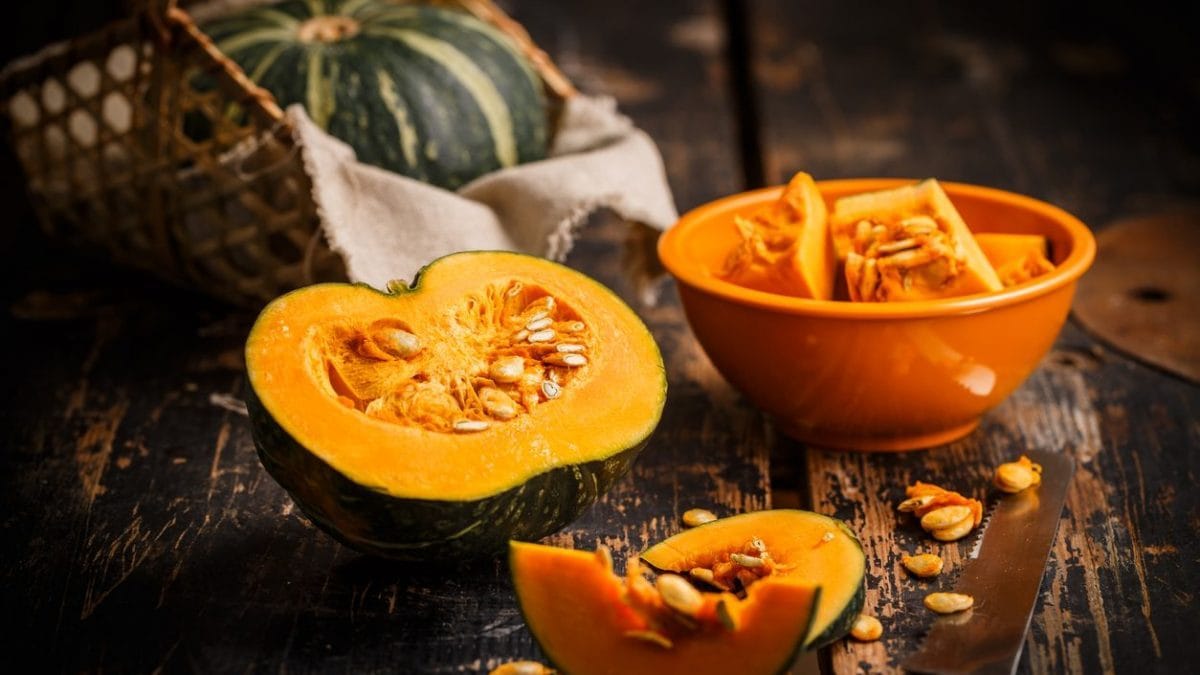
When we talk about fall and recipes related to its season, it's the pumpkin that immediately comes to mind: her majesty the pumpkin, the symbolic vegetable of this wonderful time of year. Flavorful and with its characteristic orange flesh, more or less bright depending on the variety, it adds color and flavor to any recipe, sweet or savory, traditional or even more creative. Rich in vitamins, minerals, and fiber, it is also an excellent ally for health and beauty. Pumpkins, however, are not all the same; there are numerous types, differing in shape, size, origin, and consistency, and each lends itself to certain preparations in particular.
The most well-known and used species in cooking are Cucurbita maxima and Cucurbita moschata. The former includes varieties with firm, consistent flesh and a sweet flavor, such as the Delica, while the latter includes more elongated pumpkins, such as the Butternut, which generally tend to have a more watery flesh. Let's take a look at the most common ones in the U.S. and their culinary uses.
1. Dickinson
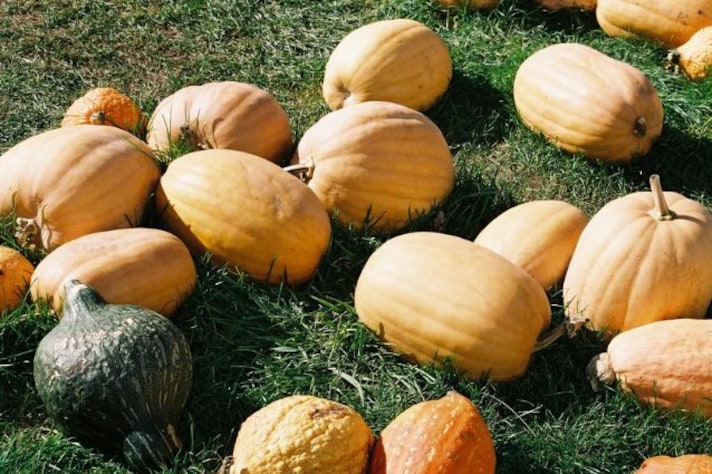
It is the symbolic pumpkin of American pie-making: also known as the Dickinson field pumpkin, this tan-skinned variety is closely tied to the Midwestern plains, where it has been cultivated since the early 19th century. Recognizable by its smooth, buff-colored rind and deep orange, velvety flesh, it has a dense yet creamy texture and a naturally sweet, mellow flavor. Its exceptional consistency and balanced sugar content have made it the preferred variety for canned pumpkin purées—including the one used by Libby’s, the brand behind most traditional American pumpkin pies.
This heritage variety isn’t particularly eye-catching, but its organoleptic qualities are outstanding: rich aroma, silky mouthfeel, and a flavor that sits somewhere between sweet potato and butternut squash. Its thick flesh holds up beautifully when roasted, mashed, or turned into velvety soups and custards. Above all, it is the heart of the classic American pumpkin pie, the dessert that defines Thanksgiving tables across the country.
2. Jarrahdale
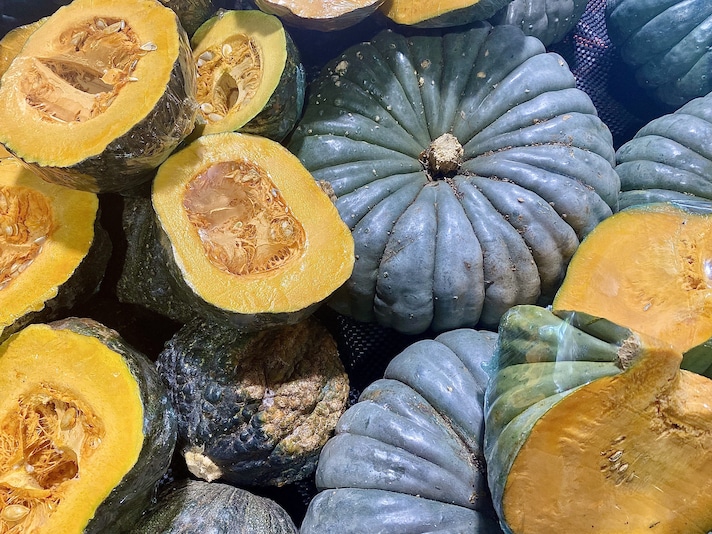
It is one of the most striking pumpkins found on American market stalls: the Jarrahdale pumpkin, instantly recognizable by its cool, slate-blue rind and sculpted, ribbed shape that looks almost too beautiful to eat. Originating in Jarrahdale, a small town in Western Australia, this heirloom variety found its way to the United States decades ago, where it quickly earned a place among chefs and home cooks who prize its refined sweetness and elegant appearance. Beneath its smooth, steel-toned skin lies dense, richly colored orange flesh with a flavor that strikes a perfect balance between nutty and sweet, evoking notes of butternut and sweet potato.
Though often chosen for its ornamental beauty in fall displays, the Jarrahdale pumpkin’s real magic is culinary. Its firm, low-moisture flesh makes it ideal for roasting, soups, and baking—holding its texture without becoming watery. It shines in savory dishes like risotto or pumpkin soup, and its subtle caramel undertones make it equally suited for pies, tarts, and custards. Thanks to its thick rind and long storage life, the Jarrahdale is a reliable variety for autumn and winter cooking.
3. Delica
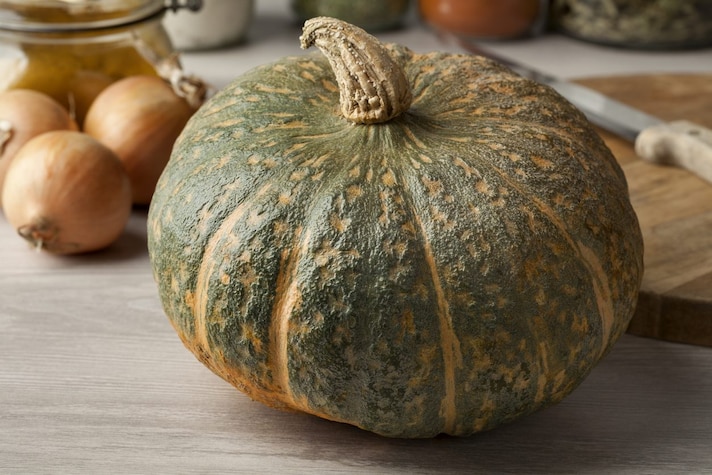
Of all the varieties, this is definitely my favorite. Small, weighing on average around 1-1.6 kg, it has a graceful, rounded, and flattened shape. The skin is thin and dark green, with slight grooves that turn brown when perfectly ripe: if you buy organic or from a reliable source, you can eat it whole, with all the outer rind. When cut, it reveals a deep yellow-orange pulp, very firm and with a very sweet flavor, reminiscent of chestnuts, with an irresistibly nutty aftertaste.
Originally from Japan and derived from a cross, it is now widespread in the U.S., grown primarily in select North American growers. It is an early variety, available as early as the beginning of summer. Its extraordinary organoleptic qualities make it suitable for all types of preparations: fresh stuffed pasta, cream soups, soups, gnocchi, breads, focaccias, and even delicious leavened products, rustic pies, and sweet creams.
4. Iron Cup
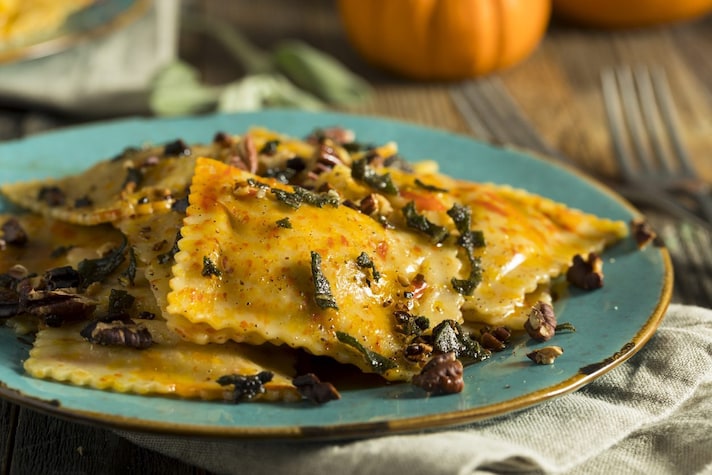
Dark green in color, slightly ribbed and mottled, this variety closely resembles the Delica, but it ripens later. Inside, it hides bright orange flesh, firm, compact, and sweet, with a pleasant chestnut flavor. Called Iron Cup for its rather tough and resistant outer rind (which also gives it an excellent shelf life), it is also called the "perfect pumpkin" and is a cross between a Moscata and a Maxima variety.
Extremely versatile, it can be used in numerous sweet and savory preparations: ideal in risottos, cream soups, and stuffed fresh pasta, it's so good that it can simply be cut into wedges or cubes, seasoned with a pinch of salt, a little rosemary, and a drizzle of oil, and finally roasted until lightly golden. It's the perfect accompaniment to any meat or fish dish. Once cooked and pureed, it can also be incorporated into sweet doughs and used to create soft cakes, delicious loaf cakes, and irresistible custards.
5. Hokkaido
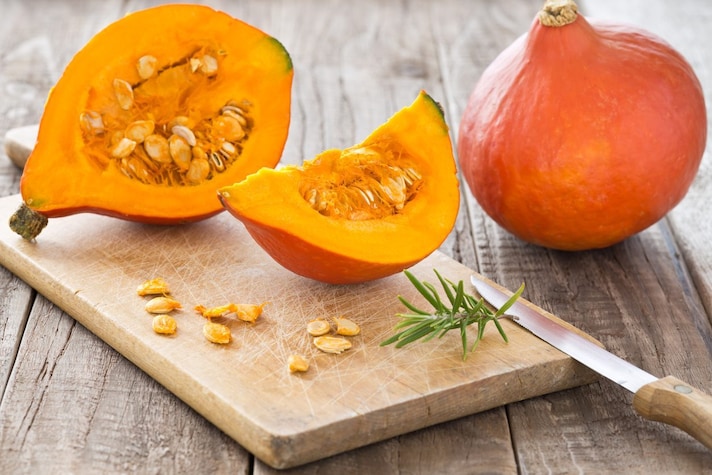
Originally from Japan, also known as chestnut squash or Potimarron Red Kuri, the Hokkaido squash is characterized by its small, seed-like shape and its unique, sweet, and aromatic flavor, reminiscent of chestnuts. The outer rind, also orange in color like its flesh, is edible and very tender, so it can be cooked and enjoyed without hesitation.
Compared to other varieties, it is low in water and has a firm, floury consistency, making it ideal for fillings in fresh pasta and savory pies, in sweet dough, and in recipes requiring a certain density and firmness. It can also be roasted like potatoes, or added to other vegetables to create creamy, smooth soups and purees.
6. Long Island Cheese
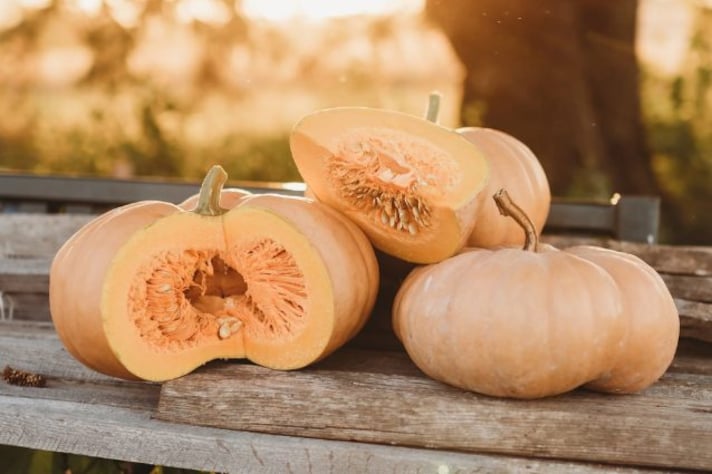
It is one of the most historic and beloved heirloom pumpkins in the United States: the Long Island Cheese Pumpkin, easily recognized by its smooth, flattened shape and pale buff-tan rind that resembles a wheel of aged cheese—hence its name. First cultivated along the coastal farms of Long Island, New York, in the early 1800s, it became a staple in American kitchens throughout the 19th century, prized for its reliability and excellent storage qualities. Beneath its modest exterior lies a treasure of deep orange, velvety flesh, known for its natural sweetness and subtle notes of caramel and nuttiness. Its rich flavor and creamy consistency have made it a classic choice for traditional pumpkin pies, soups, and custards, earning it a place in countless autumn recipes.
More than just a cooking pumpkin, the Long Island Cheese variety represents a piece of American agricultural history—one that nearly disappeared before being revived by local seed savers and small farms committed to preserving regional heirlooms. Its fine-grained texture and balanced sugar content make it one of the most versatile pumpkins for both sweet and savory dishes, from roasted wedges drizzled with maple syrup to silky purées folded into risotto. Thanks to its resilience and long keeping quality, it continues to thrive in small farms across the Northeast.
7. Musquée De Provence
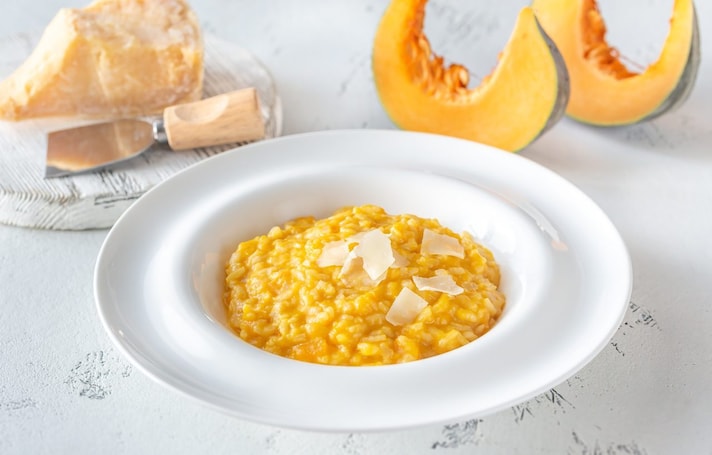
It belongs to the Cucurbita moschata species, the same species that includes the butternut squash. With a flattened shape, it can weigh up to 15 kg and has a smooth, terracotta-colored skin with very pronounced grooves. The flesh, however, is soft and fleshy, a beautiful bright orange color; like muscadines in general, it is decidedly more watery than other varieties and has a less sweet and bold flavor. It is especially suitable for making cream soups, soups, and risottos.
8. Butternut Squash
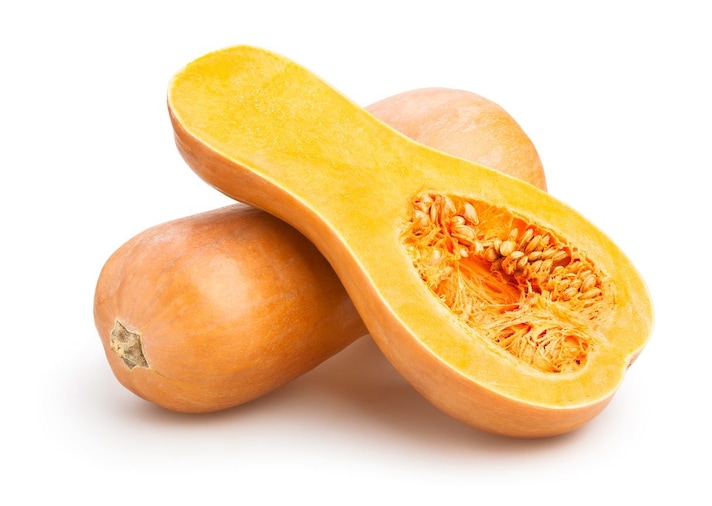
Belonging to the Cucurbita moschata species, it is a winter variety, particularly widespread in Australia, New Zealand, and the United States. It is also known as "violin squash" due to its particular oblong shape that, when cut lengthwise, makes it resemble a musical instrument case. It has a smooth, thin outer skin, pale orange in color, among the easiest to peel (and for this reason, once cooked, it can safely be eaten with the entire peel).
The tender, firm flesh has rather small seeds. It has a pleasantly sweet flavor and a distinctive nutty aftertaste, making it ideal for desserts, jams, or paired with savory ingredients. Its softness and delicate flavor, more concentrated in smaller pumpkins, mean it can also be used in creams, soups, and veloutés. Since it tends to absorb little oil, it is also suitable for frying. Being a late-ripening pumpkin, the harvest period usually falls between November and February.
9. Blue Habbard Squash
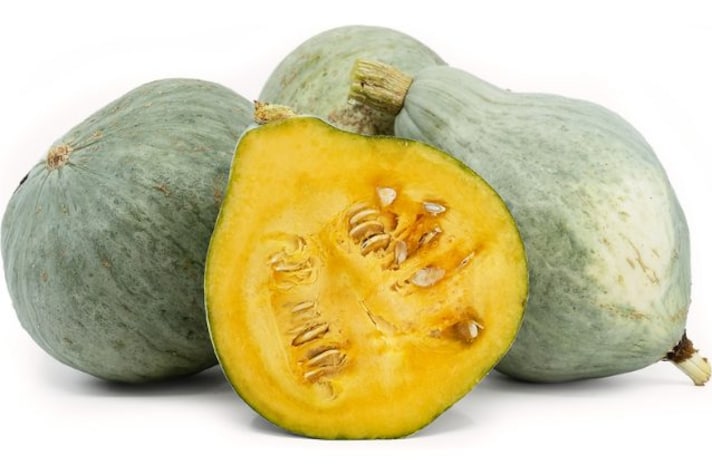
It is one of the oldest and most enduring heirloom squashes cultivated in the United States: the Blue Hubbard squash, with its distinctive bulky, teardrop shape and rugged, blue-gray rind, has been a fixture of New England gardens since the mid-1800s. Introduced to American seed catalogs in the 1850s, it quickly became prized for its exceptional keeping quality and dense, richly flavored flesh. Beneath its thick, warty skin lies a deep orange interior that is sweet, slightly nutty, and faintly earthy, making it ideal for both sweet and savory preparations. Its sturdy, protective shell allows it to store for months after harvest, providing reliable winter nourishment long before refrigeration became common.
Culinarily, the Blue Hubbard stands out for its firm, dry texture and full-bodied flavor, which develop beautifully when roasted, pureed, or baked into traditional autumn dishes. Its sweet, chestnut-like notes make it a favorite for pies, soups, and gratins, while its hearty consistency gives substance to risottos and vegetable stews. Though its size and tough skin can intimidate even experienced cooks, the payoff is exceptional: once roasted, its flesh becomes tender and aromatic, with a complexity reminiscent of the Italian Zucca di Piacenza or Marina di Chioggia.
10. Spaghetti Squash
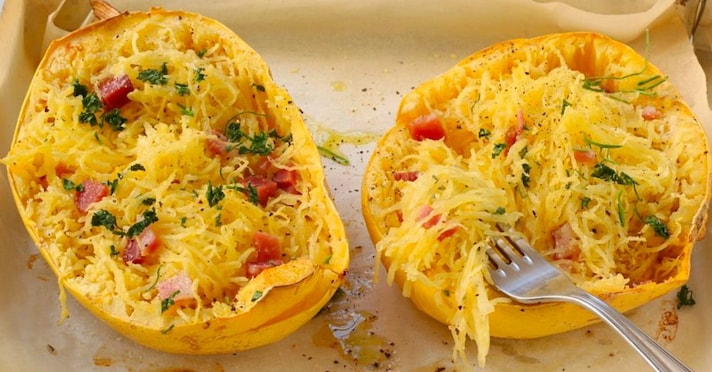
Originating in South America, this is certainly the most unusual variety, but also the least known of all. When cooked, it produces long strands very similar to spaghetti, perfect enjoyed on their own with a drizzle of oil and a pinch of salt or tossed with one of the classic pasta sauces. Harvest takes place in autumn, but if stored properly, it can be eaten throughout the winter.
Light in color, tending towards ivory-yellow, it has a delicate, neutral flavor, with an aftertaste reminiscent of walnuts. Truly unique, it lends itself to creative, original recipes, and especially when used to create "fake" first courses, even decidedly light ones.
;Resize,width=767;)
